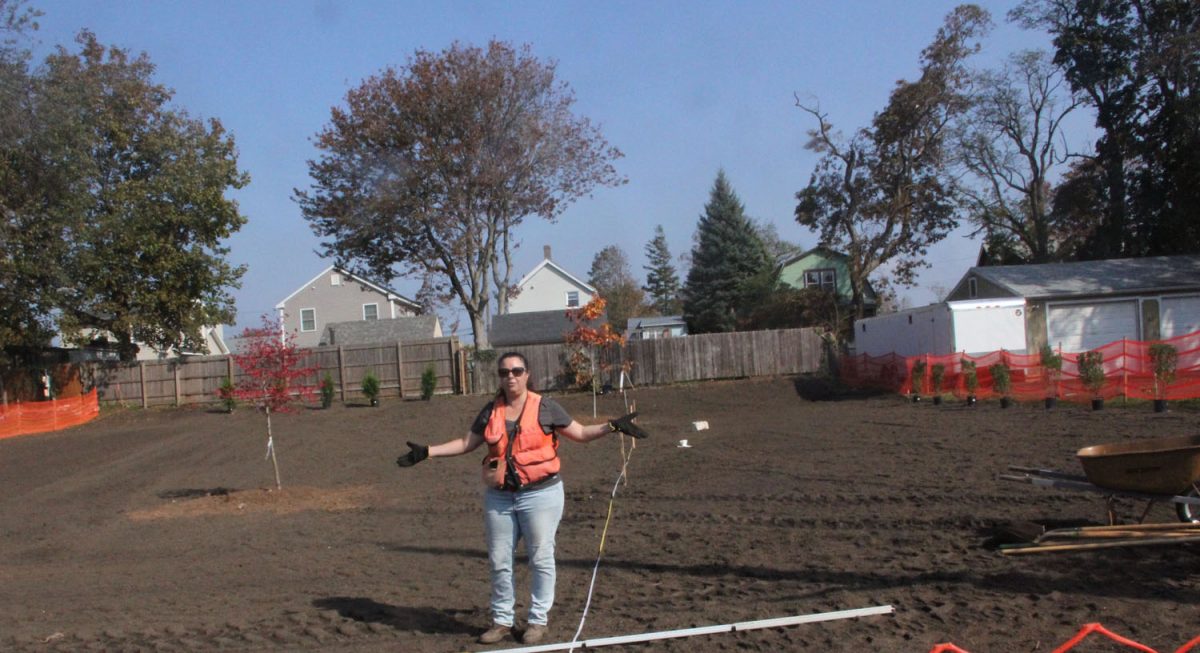
Story and photos by Judy Benson
Retreat isn’t defeat.
It’s deliberately stepping back to make a better future.
“Retreat is very difficult, but it’s going to happen,” said A.R. Siders, assistant professor in the Biden School of Public Policy and Administration at the University of Delaware. “Wouldn’t it be better to have a managed process? It can be an opportunity to do something more exciting than elevating a few houses, and there are resources available.”
A national expert and keynote speaker at the “Managed Retreat in the Age of Climate Change” virtual workshop on Nov. 13, Siders challenged the audience of about 130 municipal and state land-use officials and others to rethink notions of what’s possible. Rising seas and more frequent flooding of coastal and riverine areas means getting people out of harm’s way is necessary, she said. But can also be a chance to improve our waterfronts for everyone.
Siders said she began focusing on how retreat can be done in an orderly, methodical way—rather than as a haphazard reaction to a disaster—after Superstorm Sandy in 2012. It’s the better alternative to the other options: avoidance, fortifying shorelines with concrete or accommodating rising seas by elevating properties, she said.
To begin the hard conversation with communities, Siders urged land use professionals to pose it as challenge to realize a positive vision for the future: “What do you want your city or community or coast to look like in 30 years? 100 years?
“I don’t want to see a coast that’s armored with sea walls, but I would love to see open beaches all the way from Maine to Texas, so everyone can access them. It won’t happen if we don’t plan for retreat,” she said.
The workshop was the latest in a series hosted by the Climate Adaptation Academy, a partnership of Connecticut Sea Grant and The Center for Land Use Education & Research (UConn CLEAR). Juliana Barrett, CT Sea Grant coastal habitat specialist, and fellow organizer Bruce Hyde, extension educator with CLEAR, emphasized that this workshop is considered the first in a series on managed retreat that will delve into this complex and important issue.
“We see this as just getting the conversation going,” said Barrett.
Hyde set the stage for the presentations with a story and slides from Connecticut’s past. After the 1938 hurricane destroyed a beachfront community in New London, the city acquired the property, razed what remained of the homes and turned it into a large public beach. Today Ocean Beach Park is one of the city’s jewels.
“This is an example of using managed retreat 60 years ago and it has been very successful,” he said.
Siders also noted that there have been more recent examples of successful managed retreat projects across the country, including 12 in Connecticut. Most of these have been small scale, however. At the same time, though, new homes are still being built in vulnerable areas. In Connecticut alone, she said, 478 new homes were built from 2010 to 2017 in a 10-year flood plain.
In the second half of her talk, Siders outlined the multiple issues that arise and kinds of expertise needed to carry out managed retreat. Planners must be mindful of income equity issues—not favoring high income over low income properties, for example—the layers of regulatory and financial considerations/ Also critical, she said, is keeping the process transparent and communication lines open between residents and government. Offering financial incentives, help with finding new homes and working through nonprofit groups to build trust are some of the strategies that might be used, she said.
After Siders, Attorney Marjorie Shansky addressed the legal issues of managed retreat. “Can we adapt policies and regulations to promote managed retreat?” she asked.
These could include mechanisms that favor living shorelines over shoreline hardening, enacting stricter coastal setbacks and buffers and limiting and prohibiting coastal development altogether. She noted that the Florida Keys will no longer issue new building permits after 2023.
Starting the discussion about reimaging a local coastline where people aren’t constantly in a futile fight with rising waters is a good first step, she said. But communities need to start doing more.
“We must move from planning to action,” Shansky said.
Two examples of that kind of action offered inspiration for what can be accomplished. In downtown Meriden, a $13 million project funded by various state and federal agencies has transformed a blighted, flood-prone area into a municipal park. Public Works Director Howard Weissberg, City Engineer Brian Ennis and Assistant Planning Director Paul Dickson took turns describing various aspects of what one of them described as “a flood control site first, a park second, and an economic development parcel third.”